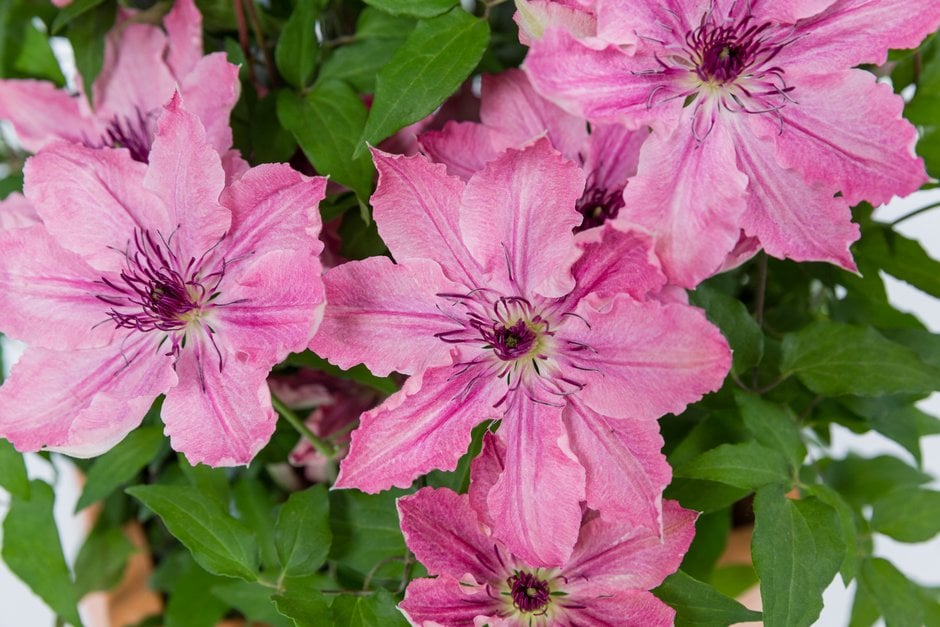Clematis Sarah Elizabeth ('Evipo098') (Boulevard Series)
clematis [Sarah Elizabeth]
A compact climber to 1.5m high with green leaves and large, single, pink flowers with deep red anthers; flowers are borne from early to midsummer and again from late summer into early autumn
Size
Ultimate height
1–1.5 metresTime to ultimate height
2–5 yearsUltimate spread
0.5–1 metresGrowing conditions
Moisture
Moist but well–drainedpH
Acid, Alkaline, NeutralColour & scent
| Stem | Flower | Foliage | Fruit | |
| Spring | Green | |||
|---|---|---|---|---|
| Summer | Pink | Green | ||
| Autumn | Pink | Green | ||
| Winter |
Position
- Full sun
- Partial shade
Aspect
South–facing or West–facing or North–facing or East–facing
Exposure
Exposed or Sheltered Hardiness
H6Botanical details
- Family
- Ranunculaceae
- Native to GB / Ireland
- No
- Foliage
- Deciduous
- Habit
- Climbing
- Potentially harmful
- Skin irritant. Wear gloves and other protective equipment when handling. Pets (rabbits): Harmful if eaten. For further information and contact numbers regarding pets, see the HTA guide to potentially harmful plants
- Genus
Clematis can be deciduous or evergreen shrubs or herbaceous perennials, mostly climbing by twining leaf-stalks, and often with showy flowers. Some have attractive fluffy seedheads in autumn
- Name status
Trade
How to grow
Cultivation
Grow in full sun or partial shade in containers (at least 45cm deep and wide) or in the ground, in cool, moisture-retentive, well-drained soil, with the crown 5-8cm deep to encourage new shoots to grow from below ground level; keep the base of the plant and the roots cool and shaded by other plants or a layer of pebbles or flat stones; for more advice, see clematis cultivation
Propagation
Propagate from cuttings (climbers) or by layering, for home use
Suggested planting locations and garden types
- Cottage and informal garden
- Patio and container plants
- City and courtyard gardens
- Flower borders and beds
- Wall side borders
Pruning
Pruning (clematis) group 2, light prune for early flowers. Remove dead and damaged stems before growth begins in early spring. Trim all remaining stems to strong buds. Hard prune for easy-care option using Pruning (clematis) group 3
Pests
May be susceptible to aphids, capsid bug, caterpillars, and glasshouse red spider mite; flowers may be damaged by earwigs; young shoots are vulnerable to slugs and snails; container-grown plants may be susceptible to vine weevil
Diseases
May be susceptible to honey fungus (rarely), clematis wilt and clematis slime flux
Clematis Sarah Elizabeth ('Evipo098') (Boulevard Series)
clematis [Sarah Elizabeth]
Get involved
The Royal Horticultural Society is the UK’s leading gardening charity. We aim to enrich everyone’s life through plants, and make the UK a greener and more beautiful place.
